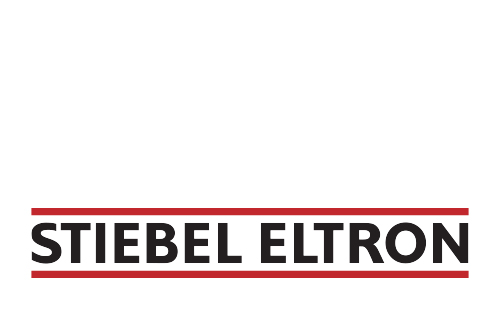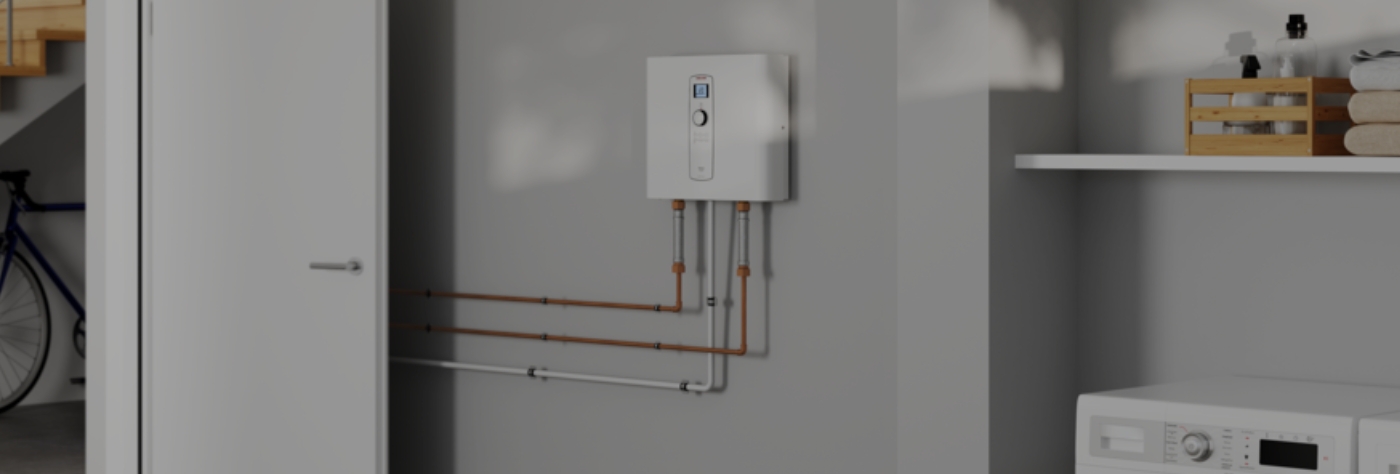Choosing the right tankless water heater for your whole house can save you money and keep your hot water needs fully met.
For a typical household, a tankless water heater with a flow rate of 7-9 gallons per minute (GPM) is recommended to efficiently meet daily hot water demands.
Knowing the importance of size, capacity, and household requirements will help ensure a smooth and effective hot water experience.
Each home is unique, so it’s important to factor in your specific hot water usage when selecting a tankless water heater.
The climate you live in can also impact the performance, with cooler areas requiring higher capacity units to maintain a good water temperature.
Using tools like a sizing calculator can help pinpoint the exact specifications you need, ensuring compatibility with your home’s design.
In addition to sizing, consider the installation and maintenance of your new unit.
A properly installed heater reduces energy costs and prolongs the device’s lifespan.
Understanding cost considerations and maintenance requirements prepares you for a long-lasting investment in your home’s comfort.
Key Takeaways
- Know your household hot water demand before choosing a heater.
- Tools like calculators help determine the best size for your home.
- Consider installation and maintenance for efficiency and longevity.
Understanding Tankless Water Heaters
Tankless water heaters provide a continuous supply of hot water by heating the water directly without the need for a storage tank. These systems are energy-efficient and have different types to suit various household needs.
Benefits of Tankless Water Heaters
Tankless water heaters offer numerous advantages. One key benefit is continuous hot water. Unlike traditional tanks, these heaters only warm water as needed, ensuring you never run out during long showers or back-to-back appliance use.
Energy efficiency is another significant benefit. Since they don't maintain a tank full of hot water, tankless models usually use less energy. This efficiency can lead to reduced energy bills over time.
Tankless models also have a longer lifespan, often lasting over 20 years, compared to 10-15 years for tank models.
They require less space, making them ideal for small homes or those looking to free up utility space.
Types of Tankless Water Heaters
Electric tankless water heaters are popular for their ease of installation and operation. They rely on electricity to heat water, making them suitable for homes with limited gas access. They are typically smaller and can be installed indoors.
Gas tankless water heaters use natural gas or propane. They are often more powerful than electric ones and can heat larger volumes of water quickly. This type is ideal for larger families requiring higher flow rates and temperature rise.
Outdoor tankless water heaters are designed for external mounting, saving valuable indoor space. They are equipped to handle varying groundwater temperatures. These models can be an excellent option if you need to save space inside the home.
Determining Size and Capacity
To size a tankless water heater properly, you need to consider both flow rate and temperature rise. These factors will help you choose a system that meets your home's hot water needs.
Calculating Flow Rate and Temperature Rise
To determine what size tankless water heater you need, calculate the flow rate in gallons per minute (GPM). Add up the flow rates of all hot water fixtures you'll use simultaneously.
Common fixtures include kitchen faucets, showers, and dishwashers. For example, a shower typically uses 2.0-3.0 GPM, while kitchen faucets use 1.0-2.0 GPM.
Next, find the temperature rise by subtracting your inlet water temperature from the desired output temperature. If your inlet water is 50°F and you want 110°F water, the temperature rise is 60°F.
Knowing both the flow rate and temperature rise helps you size a tankless water heater effectively.
For more detailed calculations, explore resources like this tankless sizing calculator and learn about regional variations in water temperature needs.
Installation and Maintenance
Choosing the right tankless water heater involves understanding not just size, but also installation and maintenance specifics.
Installation costs can vary greatly depending on whether you choose an electric or gas model, while proper maintenance can extend your water heater's life and efficiency.
Installing Tankless Water Heaters
When installing tankless water heaters, selecting between electric and gas models is crucial.
Gas tankless heaters often require complex venting systems and potentially higher installation costs due to gas line requirements. In contrast, electric tankless water heaters may have lower installation costs, needing only electrical hookups.
Prepare for additional costs in upgrading existing plumbing fixtures to match the specifications of your new heater.
Ensuring correct installation helps in maximizing efficiency and ensuring the warranty remains valid.
Maintaining Your Tankless Water Heater
Maintaining a tankless water heater is key to ensuring longevity and performance. Gas and electric water heaters require slightly different care routines. For instance, gas water heaters may need regular vent cleaning to prevent blockages.
Keeping an eye on water quality is important to avoid mineral buildup in your heater. Installing water softeners can help prevent scale deposits.
Regular flushing of the system helps maintain optimal flow and efficiency. Always follow the manufacturer recommendations regarding maintenance intervals and warranty conditions to protect your investment.
Evaluating Household Hot Water Use
When choosing a tankless water heater for your home, understanding your household's hot water needs is crucial.
Key considerations include how much hot water you use at peak times and the rate of water flow needed to meet this demand.
Assessing Peak Demand
To determine the right size of a tankless water heater, start by evaluating your hot water supply needs during peak demand times.
Peak demand refers to the highest simultaneous use of hot water. For instance, if you're running two showers while also using a dishwasher, this creates high demand.
Consider the average flow rate in gallons per minute (GPM) for each fixture. A shower typically needs about 2.0 - 3.0 GPM, and faucets might need around 1.0 - 2.0 GPM. Adding these up during the busiest times of day gives you the total peak demand.
A tankless water heater must supply the right water flow to meet this peak hot water demand effectively.
Testing the maximum flow at home can help you pinpoint the right capacity.
Cost Considerations
When considering a tankless water heater for your home, understanding the costs involved can help you make an informed decision.
It's important to assess both the initial purchase price and the operation costs that affect your budget over time.
Purchase and Operation Costs
Purchasing a tankless water heater involves evaluating different brands and models.
The average cost for a gas tankless water heater ranges from $1,000 to $1,500, while electric models can cost between $500 and $1,500.
Installation can add another $800 to $3,500, depending on complexity.
The operation cost includes considering the water flow rate and the number of fixtures. For example, a unit with a high gallons per minute (GPM) rate is ideal if multiple fixtures are used simultaneously.
Models with higher efficiency can result in lower energy bills, providing savings over time.
Calculating Tools and Resources
When it comes to finding the right size tankless water heater for your home, using the appropriate tools and resources can make a significant difference. Having access to online calculators and understanding key measurements ensures you choose a unit that matches your needs.
Utilizing Sizing Calculators
Using a tankless sizing calculator is a practical way to determine which water heater fits your needs.
These calculators consider variables like water flow rates and temperature rise. For example, if you are using two showers and a faucet at peak time, you might need a heater that can handle at least 9 gallons per minute (GPM) in warmer climates or 11 GPM in colder regions.
These calculators guide you through the process by asking for inputs such as the number of bathrooms or fixtures you have and the desired water temperature. They use this data to recommend a suitable tankless water heater sizing calculator to help ensure you're getting the right capacity.
Many websites offer these calculators for free, providing a convenient tool to optimize your home's HVAC system effectively.
Frequently Asked Questions
Choosing the right size for a tankless water heater involves understanding your household's hot water needs, including flow rate and specific considerations for electric models. It’s important to ensure your tankless model can handle the requirements of a whole house, whether you have a small household or a larger one.
How do I calculate the size of a tankless water heater I need?
To determine the size you need, you must calculate the flow rate and temperature rise.
Consider the number of devices that will use hot water at the same time. You’ll need to account for both the flow rate in gallons per minute (GPM) and the temperature rise necessary, which is the difference between incoming water temperature and desired output temperature.
What flow rate is suitable for a tankless water heater in a whole-house application?
For a whole house, the typical flow rate for a tankless water heater can range from 5 to 10 GPM. This range depends on the number of simultaneous uses, such as showers, dishwashers, and washing machines.
Evaluate your household's peak demand to choose the right flow rate.
Can a tankless water heater meet the needs of a four-person household?
Yes, a tankless water heater can meet the needs of a four-person household.
Ensure the unit you choose can handle multiple outlets at once. For example, if two showers and a dishwasher may run simultaneously, plan for a flow rate that supports these activities.
Is it feasible to replace a traditional 50-gallon water heater with a tankless model?
Replacing a traditional 50-gallon water heater with a tankless model is feasible.
Ensure the tankless unit's flow rate matches your peak hot water demand. Consider the pros and cons, such as energy efficiency and flow rate, before making the switch.
Are there specific sizing considerations for electric tankless water heaters?
Electric tankless water heaters require careful consideration of both electrical capacity and expected hot water demand.
Ensure your home’s electrical system can support the unit’s demands, and choose a model that fits your household's use patterns and region’s climate.
What factors determine the size of the tankless water heater for a couple?
For a couple, factors like water usage habits and electric capacity (if choosing an electric model) are key. Assess peak usage and select a heater that provides adequate flow rate. Smaller households generally need a lower GPM, saving energy and cost.
Choosing the Right Size Stiebel Eltron Tankless Water Heater for Your Home
At Stiebel Eltron, we are committed to ensuring that your home enjoys optimal comfort and efficiency.
Selecting the right size tankless water heater for your entire house is crucial for meeting your hot water needs without compromising performance.
Our expert guide helps you understand the factors involved in sizing, from flow rates to temperature rise, ensuring you make an informed decision.
With Stiebel Eltron, you can trust that our high-quality, precision-engineered water heaters will deliver consistent, reliable hot water throughout your home.
Let us help you find the perfect fit for your household and experience the unparalleled performance of Stiebel Eltron.

